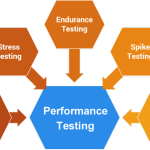Swing trading and day trading in the Forex landscape come with their own set of rules, limitations, and benefits. If you are uncertain about which one is right for you, this detailed guide sheds light on four major aspects revolving around both trading strategies so, check them out to make an informed choice.
1. Time Commitment
Forex day trading requires a significant time commitment. Traders usually hold positions for a few minutes to several hours. This timeframe allows them to capitalize on small price fluctuations throughout the day. Just stick to your trading platform, monitoring charts, and executing trades in real time.
On the contrary, swing trading offers a more flexible schedule. Being a swing trader, you can hold positions for several days or even weeks, enabling you to analyze market trends and news. The best part? There’s no pressure for immediate execution. Whether you are a full-time employee or have other commitments, this trading style can be beneficial for you.
2. Risk and Reward
Due to rapid price movements in day trading, the potential for quick profits is paired with a higher risk of financial losses. As a day trader, you must be adept at making split-second decisions and managing your exposure to sudden market changes. Day trades are usually smaller in size. However, profits generated can accumulate quickly. That’s why precision is necessary to avoid financial losses.
Conversely, over a longer time span, swing traders usually capture more substantial price movements. Utilizing this trading approach often results in higher potential returns. Despite this, it requires a willingness to navigate price fluctuations during the holding period. Swing trading may offer a more balanced risk-reward ratio. You can set wider stop-loss orders and plan when to exit more deliberately.
3. Market Analysis
Technical analysis is what both trading styles rely on. However, they typically use different time frames and tools. To inform their trades, day traders focus on minute charts, looking for intraday patterns and volume spikes. In their arsenal, some crucial tools they leverage are candlestick patterns, moving averages, and momentum indicators.
Alternatively, swing traders tend to analyze daily or weekly charts, emphasizing broader market trends and fundamental analysis. If you are a swing trader and want to make informed decisions about when to enter or exit a position, you should consider news events, economic indicators, and longer-term patterns.
4. Emotional Discipline
The secret of successful trading is an emotional discipline. The high-pressure environment of day trading can test your psychological resilience. The constant need to react to market changes can result in stress and impulsive decisions.
On the flip side, swing trading may provide a reprieve from this pressure. As a swing trader, you may have more time to plan and reflect on your strategies. The additional time you have, the better the emotional control and decision-making process will be. Hence, you will achieve long-term success in the Forex market.
Conclusion
The choice between swing trading and day trading depends on your individual goals, availability, risk tolerance, and trading style. So, consider them all, choose a prop firm like Maven Trading to work with, and select a strategy that aligns with your financial objectives. Thus, favorable trading outcomes will await you.















